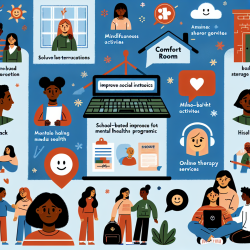Introduction
In the ever-evolving landscape of academia, the traditional "pipeline" model of scientific careers is increasingly seen as inadequate. The research article "A New Paradigm for the Scientific Enterprise: Nurturing the Ecosystem" proposes an alternative approach that emphasizes a more flexible and inclusive "ecosystem" model. This blog will explore how practitioners, particularly those in speech-language pathology and related fields, can leverage this new paradigm to enhance their professional development and contribute to better outcomes for children.
The Limitations of the Pipeline Model
The pipeline model envisions a linear career path from education to a permanent position, often culminating in a tenure-track role. However, this model fails to reflect the realities of today's job market, where permanent positions are scarce, and adjunct or temporary roles are more common. This rigid structure can lead to underemployment and stifle innovation by concentrating opportunities among a privileged few.
Embracing the Ecosystem Model
The ecosystem model offers a more dynamic and resilient approach to scientific careers. It emphasizes:
- Diversity of Pathways: Encouraging multiple career paths and lifelong learning opportunities.
- Collaboration and Peer-to-Peer Networks: Fostering decentralized and cooperative approaches to research and professional development.
- Flexibility and Adaptability: Allowing professionals to move in and out of traditional roles and institutions, adapting to changing personal and professional circumstances.
Practical Steps for Practitioners
Practitioners in speech-language pathology and related fields can apply the ecosystem model by:
- Engaging in Continuous Learning: Pursue additional certifications, workshops, and online courses to broaden skills and knowledge.
- Building Collaborative Networks: Connect with peers across disciplines to share resources and insights, leveraging platforms like LinkedIn and professional forums.
- Exploring Non-Traditional Roles: Consider roles outside of academia, such as consulting, private practice, or industry positions, to diversify experience and impact.
Encouraging Further Research
For those interested in delving deeper into the ecosystem model, the original research paper offers valuable insights and practical examples. By engaging with this research, practitioners can contribute to the ongoing dialogue about reforming scientific careers and enhancing educational outcomes.
To read the original research paper, please follow this link: A new paradigm for the scientific enterprise: nurturing the ecosystem.










